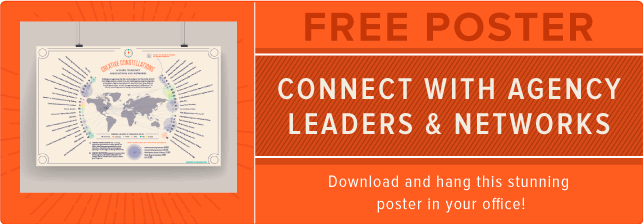6 Tips for Making the Most of Your Retargeting Campaigns

This post originally appeared on HubSpot's Agency Post. To read more content like this, subscribe to Agency Post.
You may wan't to sit down for this statistic. Ready?
Only 2% of traffic converts on the first visit to a website. I repeat, 2%.
Considering you work tirelessly to drive traffic to your website in the first place, it's crucial that you have a plan in place to win back the attention of the 98% that took off empty handed. But how?
Retargeting is an advertising technique that allows brands to remain in front of bounced visitors once they've left their website. Through the use of a JavaScript tag on your website, your visitors are "cookied" upon arrival, allowing your retargeting vendor to display your ads to them as they browse other websites. (Which is why those boots I looked at on Zappos are seemingly haunting me.)
If you're ready to turn window shoppers into actual paying customers, this is a technique that you'll certainly want to dive into a bit more. To help you do so, I've put together a comprehensive list of tips on how to make the most of of your retargeting campaigns.
Real quick, to clarify how retargeting really works, take a look at this visual:

Image Credit: Retargeter
How to Make the Most of Your Retargeting Campaigns
1) Segment Everything
With audience segmentation, users can break down their visitors into groups based on their behavior on the website. Much like lead scoring, visitors can be bucketed into different levels of sales readiness according to the specific pages they have visited.
With this information in tow, you can then create more optimal ad experiences by highlighting the products or services these specific groups previously viewed and directing them back to pages they visited.
For example: Let's say a visitor viewed both your pricing page and your case studies page, but then wandered off without taking any next steps. While it's safe to assume they had some interest, you may want to segment them and serve up an ad for your consultation page to catch their interest and re-engage them.
2) Leverage Frequency Caps
Have you ever been in a clothing store where you can't seem to make it through one rack without being heckled by a sales associate? It's like everywhere you turn they are waiting to start a dressing room for you or tell you which shade of blue best compliments your eyes.
Even if you are interested in what they're offering, it can all feel a bit overwhelming.
To avoid this type of overly assertive approach with your retargeting, you'll want to leverage frequency caps. Frequency caps allows you to place a fixed limit on the number of times a specific ad will appear to help you be more strategic in your efforts.
The frequency cap should be entirely dependent on the objective you are trying to achieve, as well as what stage of the buying cycle the visitor is in. However, as a rule of thumb, Retargeter recommends exposing visitors to 17 to 20 ads per month.
3) Experiment With Durations
While frequency caps aim to regulate the number of impressions a visitor will experience throughout the day, week, or month, campaign duration focuses specifically on the lifespan of the cookie.
When you set a duration for your retargeting campaign you're essentially creating a signal to destroy the cookie after that specified amount of time. From this point on, visitors will no longer be served up ads.
The duration of your campaign should be set to align with the length of your sales cycle. However, according to Perfect Audience, you should aim to test longer-scale campaigns (30 to 90 days) against shorter campaigns (three to seven days) to determine what converts best.
4) Don't Forget to Use Burn Pixels
If your product or service only requires a one-time purchase (or you simply don't want to waste your budget on a visitor you've already successfully converted once), you'll want to use a burn pixel.
What's a burn pixel? It's essentially a line of code that that lives on the "post-transaction" page. When a visitor lands there, they are marked as so and will stop being served ads.
However, this isn't to say that you shouldn't be focused on marketing to your existing customers. While a burn pixel helps you to conserve your retargeting budget, research from Gartner Group suggests that 80% of your company's future revenue will come from just 20% of your existing customers. That's huge.
With that said, burn pixels can also be used to remove those who have already converted from your original retargeting campaign so that you can enroll them in a secondary campaign that employs ad copy that speaks to their unique wants and needs as a customer, rather than a visitor.
5) Conduct A/B Tests
To keep your campaign fresh, you'll want to pay close attention to which ads are performing (and which ads aren't). To uncover the most effective ads, consider conducting a handful of A/B tests that hone in on specific variables.
For inspiration, check out these A/B testing suggestions:
- Size: For web campaigns, Perfect Audience found that ads with a resolution of 300 x 250 or 728 x 90 tend to perform best. Testing the size of your retargeting ads could mean the difference between an opportunity lost and a customer closed.
- Type of Content: Looking to restore their client's faith in retargeting, Add3 tested offering an ebook versus a whitepaper and ended up seeing a 325% increase in leads.
- Value Propositions: Ad real estate is primarily limited, meaning that you have little room to get your point across. To ensure they were delivering the strongest message, Retargeter tested two variations of a value proposition which helped to increase the conversion rate from 0.22% to 0.26%.
6) Rotate Your Creatives
If you went to a movie theater that never updated their film selection, would you keep going back for more? Or would you find a new movie theater?
Sure, we've all rewatched our favorite movies over and over again, but after awhile, they become predictable. And suddenly, that element of suspense and enchantment is gone.
To ensure that you're keeping your visitors curious, it's important that you have a plan for rotation. Rather than serving up the same thing every week (think grade school cafeteria menu), you'll want to swap out some of your existing ads with fresh ones to pique the interest of both new and existing visitors.
This will help to combat banner blindness and provide you with an opportunity to test out some new ad copy.
Has your company experimented with retargeting? What type of return have you seen from it? We'd love to hear about it in the comments section below.
Editor's Note: Perfect Audience is now an integration partner. With it, you can connect your marketing and advertising together with ease by creating retagreting audiences based on HubSpot Smart Lists. Check it out here.


0 Comments:
Post a Comment
Subscribe to Post Comments [Atom]
<< Home